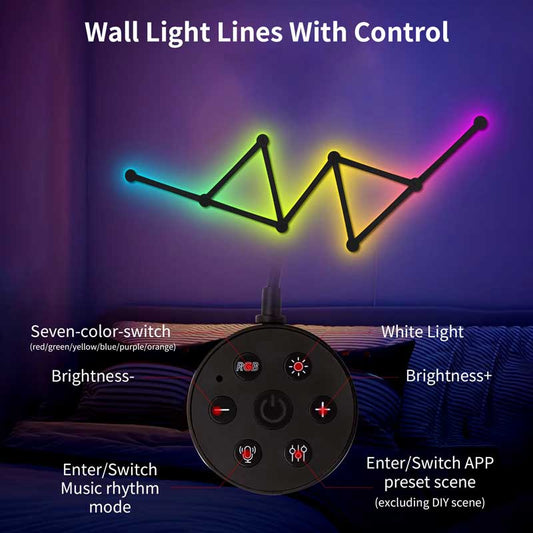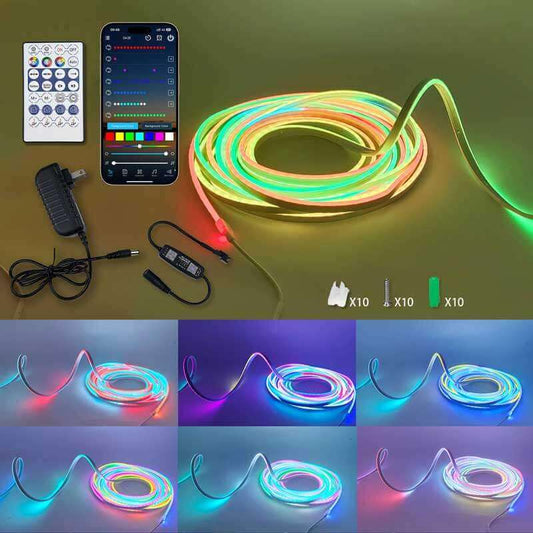Where do I start with a neglected garden?
Share
Starting with a neglected garden can feel overwhelming, but with a structured approach, you can transform it into a beautiful space. Here’s a step-by-step guide to help you get started:
1. Assess the Garden's Current Condition
- Take a Walk: Start by walking around the garden and observing everything, including the soil, plants, hardscaping (like paths, fences, and garden beds), and any potential hazards (e.g., broken glass or hidden roots).
- Take Notes: Make a list of what needs attention — are there overgrown areas, dead plants, or blocked paths? Understanding the problems will help you plan your approach.
2. Clear the Space
- Remove Weeds and Debris: Use a hoe, rake, or garden gloves to remove any weeds, dead plants, and debris (like fallen branches or old pots). Don’t forget to remove roots of perennial weeds to prevent them from regrowing.
- Trim Overgrown Plants: If there are overgrown shrubs or trees, prune them back to make space for new growth.
- Dispose Properly: Consider composting plant debris or, if needed, dispose of it at a local green waste facility.
3. Inspect the Soil
- Test the Soil: Check the quality of your soil by testing its pH and nutrient levels. You can buy a simple soil test kit or send samples to a local garden center or extension service.
- Add Soil Amendments: Based on the results, amend your soil with compost, organic matter, or other fertilizers to improve soil health.
- Aerate the Soil: If the soil is compacted, use a garden fork or aerator to loosen it up, allowing roots to penetrate easily.
4. Plan Your Garden Design
- Set Goals: Think about what you want to achieve. Do you want a space for relaxation, a vegetable garden, or a flower garden?
- Create a Layout: Sketch a rough plan of your garden. Consider plant height, spacing, and sunlight requirements. Choose plants that will thrive in your specific conditions (e.g., sunny or shaded areas).
- Prioritize Areas: Focus on the most important areas first, like paths or garden beds that need immediate attention.
5. Focus on Hardscaping (Optional)
- Paths and Borders: Repair or add garden paths, borders, and edges around flower beds. This will help create structure and make maintenance easier.
- Furniture and Features: Consider adding seating or decorative features (such as fountains, birdbaths, or planters) to enhance the atmosphere.
6. Choose and Plant New Plants
-
Select Plants Wisely: Choose plants that are suited for your garden’s conditions (light, soil, and climate). Start with easy-to-grow plants that require minimal maintenance.
- Flowers: If you want flowers, consider perennials that will come back year after year (like lavender, roses, or daylilies).
- Vegetables and Herbs: For a vegetable garden, start with easy crops like tomatoes, lettuce, and herbs (like mint or basil).
- Shrubs and Trees: Consider adding structure with shrubs or small trees, like hydrangeas, boxwoods, or Japanese maples.
- Consider Maintenance: Choose plants that fit your maintenance level. If you’re looking for a low-maintenance garden, go for drought-tolerant or native plants.
7. Watering System
- Set Up a Watering System: A soaker hose, drip irrigation, or watering cans can help you efficiently water your plants. If you live in a dry climate, consider installing an automatic system to make sure your garden gets enough water without overwatering.
- Water Early or Late: Try to water your garden early in the morning or late in the evening to minimize water loss due to evaporation.
8. Mulch and Fertilize
- Mulch: Adding mulch (wood chips, straw, or compost) to your garden beds can help retain moisture, reduce weeds, and improve soil health.
- Fertilize: Use organic or slow-release fertilizers to feed your plants. Follow the instructions carefully to avoid over-fertilizing.
9. Regular Maintenance
- Weeding: Stay on top of weeds to prevent them from overtaking your garden. Weeding once a week can help keep things under control.
- Pruning: Regularly prune plants to encourage healthy growth and prevent them from becoming leggy or overgrown.
- Deadheading: Remove spent flowers to encourage new blooms in flowering plants.
10. Personalize Your Garden
- Add Decorative Elements: Add personal touches like garden art, string lights, trellises, or decorative stones.
- Seating Areas: Create a relaxing space in your garden with outdoor furniture, a hammock, or a fire pit.
- Outdoor Lighting: Consider adding solar-powered or battery-operated outdoor lights to highlight your plants and create ambiance in the evening.
11. Patience and Observation
- Observe the Changes: Your garden will evolve over time. Take note of which plants thrive and which may need adjustments.
- Enjoy the Process: Gardening is a journey, and while immediate transformation is satisfying, the process of watching your garden grow and change can be just as rewarding.
Quick Tips for Tackling a Neglected Garden:
- Start Small: Don’t try to do everything at once. Start with a few small tasks and tackle bigger areas over time.
- Focus on Problem Areas: If some parts of the garden are in worse shape than others (e.g., a bed full of weeds or broken paths), address those first.
- Recycle and Reuse: Repurpose old pots, containers, and furniture to save money while giving your garden a personal touch.
Tools You Might Need:
- Pruning Shears: For cutting back overgrown plants and shrubs.
- Rake or Hoe: To remove weeds and debris.
- Garden Fork: For aerating compacted soil.
- Trowel: For planting and digging smaller holes.
- Watering Can or Hose: To keep plants hydrated.
- Wheelbarrow: For hauling soil, mulch, and debris.
Recommended Products for Your Garden:
- Youwei Trade Solar Garden Lights – Perfect for adding ambiance to your garden without the need for wiring.
- Retractable Garden Hose Reel – Convenient for watering and saves space when not in use.
- Gardener's Tool Set – Essential tools like pruning shears, gloves, and trowels to help you get started.
- Compost Bin – Start recycling organic waste to create your own nutrient-rich compost for your garden.
Transforming a neglected garden takes time and patience, but with the right approach, you can make it a beautiful and thriving space




